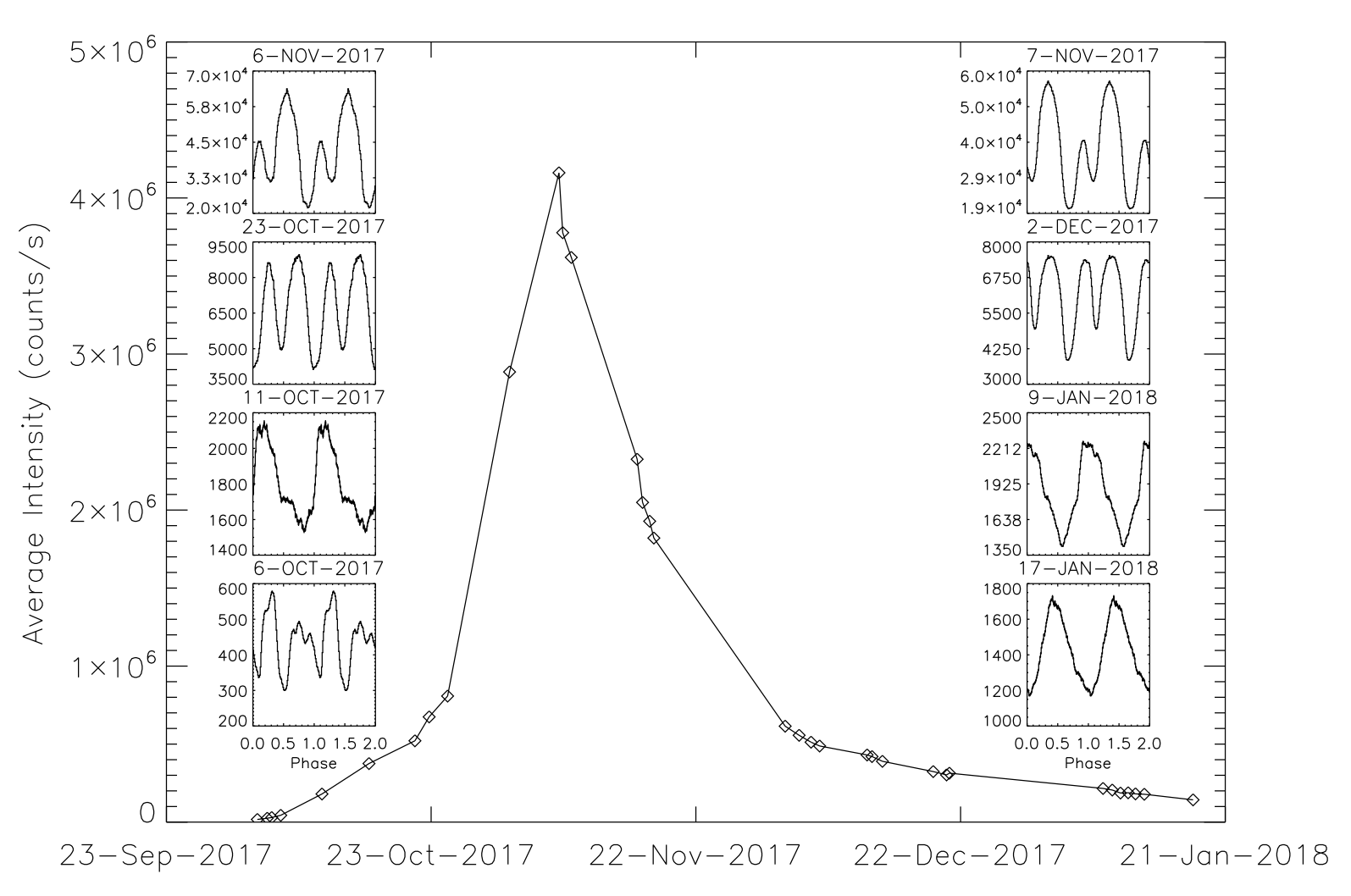NICER / ISS Science Nugget for January 23, 2018Intensity changes in the observed pulsed flux from Swift J0243.6+6124Swift J0243.6+6124 is a 9.8 second pulsar discovered last Fall. It has been undergoing a very bright outburst, reaching an observed flux nearly 6 times that of the Crab nebula and its pulsar. This translates to an observed dead time-corrected count rate in NICER of 63,000 photons/s (see top left inset). The neutron star in this binary system is accreting from a 'Be' star companion, a B-type star with emission lines that arise from an "excretion" disk outflow around it. When this disk is particularly large or dense, a giant outburst like this one can occur. The pulsar emits X-rays as material from the Be star's disk falls onto its poles, guided by the neutron star's strong magnetic field. During this outburst, NICER has observed dramatic spin-up of the neutron star, an increase in its rotation rate, as well as very large variations in the observed X-ray intensity and the shape of the pulse profiles (see figure); the pulse profile maps out the X-ray intensity as the neutron star rotates. It evolves from a complex shape at lower mass accretion rates to a single peaked shape at moderate rates, and smooth double-peaked shape at high rates. These changes in shape are likely due to changes in the accretion flow onto the pulsar at first, and changes in the accretion column at higher intensities. As the outburst begins to fade, the pulse profiles are similar to those observed at the same intensities as the outburst rose.
NICER awaits more observations to learn if this complex shape is also repeated. NICER
|



